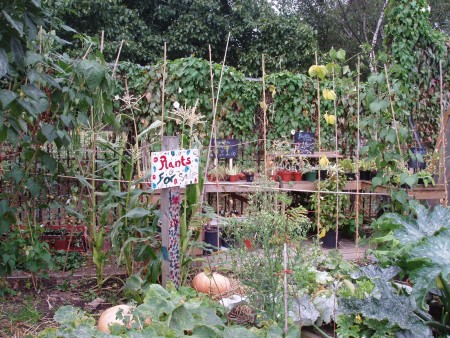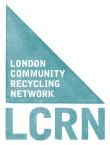Toolkit for Unlocking the Potential of Community Composting
The Toolkit's tools and techniques are summarised on this page in the following sections:
Key Principles for Meaningful Measurement
Making the case for proving and improving
Three exercises to prepare for an outcomes evaluation
You can also download the whole toolkit and appendices as a pdf.
Measuring What Matters
Anyone who has been involved with a successful Community Composting project knows that it is much more than collecting garden waste or selling compost. But when it comes to measuring the impact of the work, and proving its value, then the usual ways of measuring things often fall short of telling the whole story.
For example, the box below describes some of the effects of a community recycling project in London. Clearly these are important results of the work being done, but they can remain invisible if the only evaluation that is going on records just the number of collections made or the number of participants involved. When reduced to this, measurement can become a meaningless burden to an organisation that prevents the real work from being done.
Feeling safe and belonging to a neighbourhood
At Pepys Community Recycling (PCR) the work is much more than carrying out a reliable collection service, it is also about interacting with residents who take part in the scheme, some of whom are elderly and have mobility difficulties. As PCR put it, "it's not just collections, it's also about conversations".
In carrying out their collections around the estate, PCR staff have become recognised as unofficial community ‘wardens’ and ‘helpers’, providing an extra pair of ‘eyes and ears’ on the estate, and according to PCR the regular presence of their collection operatives helps residents on the estate feel safer.
"They put flowers along the corridor, it’s like they are proud of their space now and it’s brought them together and they care a little bit more about what the place looks like." - Outreach worker
"Its about building trust through personal service, face to face contact, people get to know you, if someone smiles at you and has a chat with you, it makes you feel better and more comfortable and like you belong, and if you feel like you belong somewhere there are all sort of knock on effects.
"We have collectors walking round the estate all day long with high-vis jackets they help residents feel a bit more secure and they also help people with problems." - PCR Project officer
A useful and meaningful measurement of the impact of an initiative must also be able to tell the story behind the numbers; but capturing the essence of that story requires more than collecting together a set of anecdotes.
A proper account of a project’s impact needs to:
The opportunity offered by such an approach is that measurement, if used wisely and comprehensively, no longer represents a burden and an add-on, but can contribute positively to the aims and objectives of a community project and be central to unlocking its potential

So to summarise, here are four key principles that if followed throughout an evaluation can make measurement more useful and meaningful.
Key Principles for Meaningful Measurement
- Beyond targets - the numbers alone do not tell the whole story. To properly evaluate change, look at outcomes and impact - very often at the level of the individual.
- Story-telling – Be clear about the link between activities and the change they are designed to bring about. Seek to understand the ‘theory of change’.
- Conversation – The search for a meaningful narrative requires a dialogue, rather than a mere extraction of data. By providing a common language for this dialogue to take place, measurement can become a tool for enhancing the quality of people's involvement.
- Choose indicators that matter – 'ways of knowing' must be chosen based on what stakeholders themselves have identified as important to measure, and not just what is easiest to count!
There are several different terms associated with outputs and outcomes, and the way these terms are interpreted by different stakeholders can bring unnecessary confusion to the understanding of impact and the way it is achieved.
The language of outputs, outcomes and impacts
An output is the thing the project team has most control over, and which creates the environment for one or more outcomes (and therefore value) to a particular stakeholder group.
An outcome is something over which there is less control (inevitably there will be other interventions and conditions which will also be contributing to bringing it about). An outcome is the demonstration of value to the stakeholder that is in line with the objectives they had for engaging with the organisation.
An impact is the extent to which an outcome can be attributed to a particular intervention. Strictly speaking this should attempt to take into account what might have happened anyway, offset against any negative effects that may result.
Clearly measurement does take time, resources and effort, but when it is done well it builds confidence and ownership and therefore contributes to the sustainability and effectiveness of an initiative. The act of measurement can then itself be an engine of change.
Inevitably it will be important to convince others that it is worth that effort, and so here are some good reasons that help make the case.
Making the case for proving and improving
1. Making good decisions - Understanding the link between activity and change informs where it is most important to allocate an organisation’s time and resources.
2. Involving people – When stakeholders are involved in planning and evaluating, they can help to gather meaningful information for decision-making and contribute to achieving the organisation's goals.
3. Accountability – For organisations that rely on people’s support and goodwill for their sustainability, communication and transparency in reporting progress are vital for building mutual trust and understanding.
4. Being in control – When an organization is in charge of its own plans, targets, and reporting, it can ensure that it is not driven off track by the measurements that funders, lenders, and others need to ensure their own accountability.
5. Not starting from scratch - Measuring need not be about collecting new information. Sometimes it is more fruitful for an organisation to make the link between the stuff they already know and what that is saying about impact.
Three exercises to prepare for an outcomes evaluation
The following three exercises can be carried out together or individually to provide different perspectives for an outcomes evaluation of a community composting initiative.
When used together, they represent elements of a formative evaluation process. At the end of this process, it is possible to identify the key indicators of what matters to measure in order to know that a project is achieving outcomes for its stakeholders. These exercises are as important for improving as for the proving part of an evaluation process.
1. Storytelling
The Storytelling exercise contributes to both project planning and project evaluation. It is designed to bring together stakeholders, including potential beneficiaries, for a discussion to identify what will make a project a success. This will identify the project's objectives, its desired outcomes, the potential barriers to success and how best to overcome them. More details...
2. Stakeholder’s Storyboard
This exercise describes a project's 'theory of change', indicating how the actions and activities of the project will bring about outcomes for its beneficiaries. More details...
3. Impact Mapping
This exercise draws on findings from the Storyboard exercise and should ideally involve representatives from the same stakeholder groups. The aim is to make a more formal link between a composting project's activities, outputs and outcomes. More details...
More resources:
Links to other tools and approaches for measuring outcomes - we provide a guide to more than 20 other tools.
Downloads - you can download the full Toolkit as a pdf document, including extra material in the form of three appendices.
Printed from: www.valuingcommunitycomposting.org.uk
This website was developed as one of the deliverables for the Defra funded Open University research project, WR0211: Unlocking the Potential of Community Composting. Information contained in it is correct at the time of publication. © The Open University, January 2009




"We also need to work on changing public perception. This will only happen if people know what we do, because it is usually ignorance that causes the sniggers." Participant, Devon Workshop
"How great it was that you chose to work with Rotters for one of your round 2 stakeholder workshops. The organisation of the workshop was very well thought out, using the Storytelling – common themes." Rotters, Liverpool
"Breaking down all that Rotters is about into the Storyboard Template was extremely useful and a real eye opener in terms of how we can work more effectively within the local community." Rotters, Liverpool
"I really enjoyed Friday’s workshop… the methods used for measuring and discussion were excellent." Exeter Workshop Participant